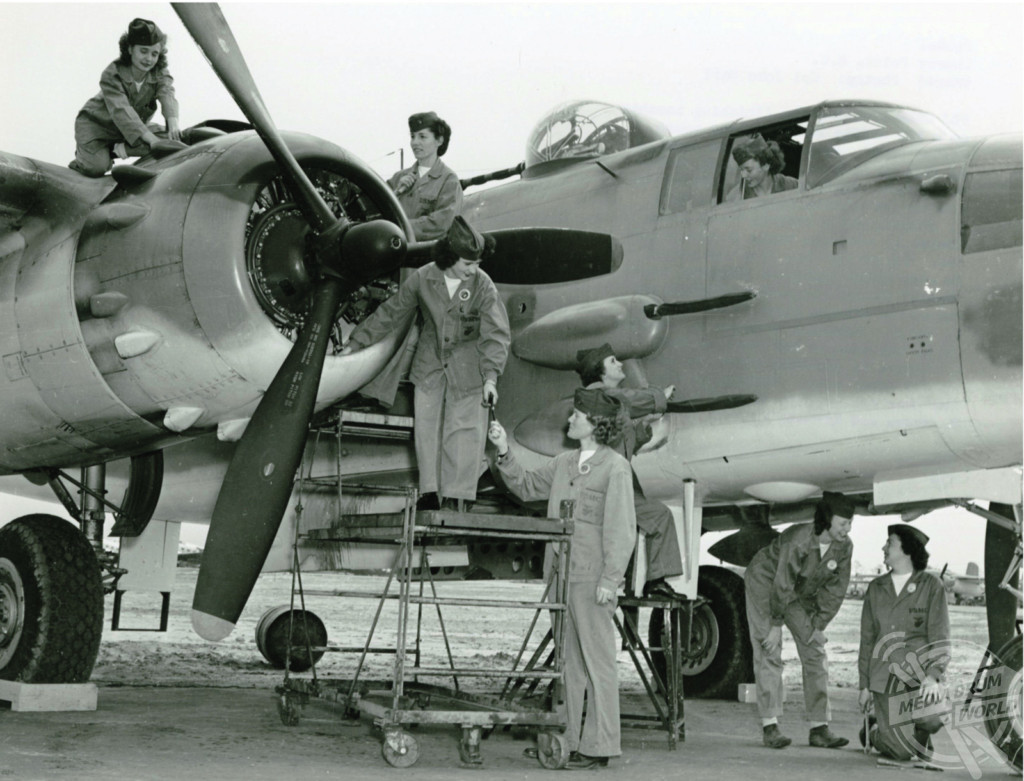
By Alex Jones
RARE PHOTOS uncovering the hidden history of the United States’ female marines have been released in an enthralling new book.
The captivating images are particularly timely, as women across the world celebrate International Women’s Day (8 March).
The stunning vintage photos show two soldiers brawling in a makeshift boxing ring, an engineer ensuring the Marine Corps’ trucks were in tip-top condition, and a group of aviation mechanics checking a plane was ready for war.
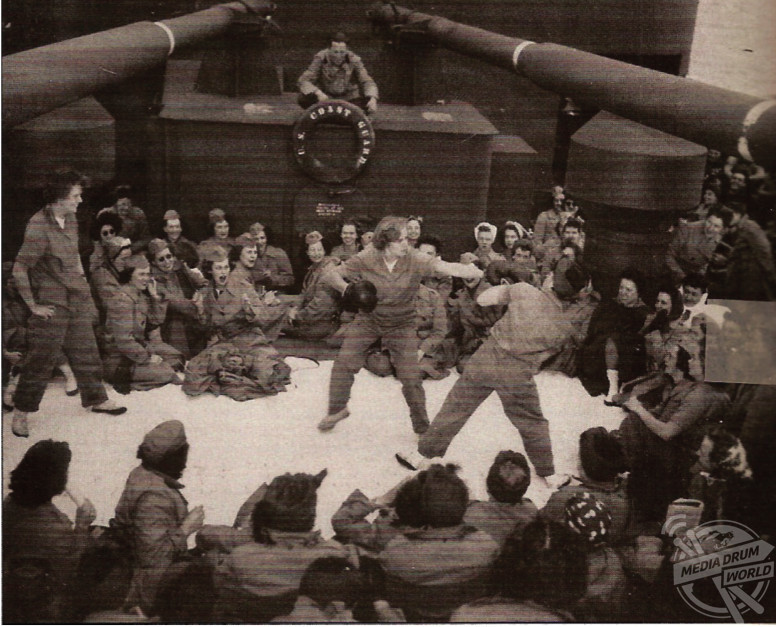
Another fascinating image shows the very first group of women to sign up for the Marines in the Second World War and the new recruits being put through their paces by drill instructors.
Historian Jim Moran’s remarkable latest book ‘U.S. Marine Corps: Women’s Reserve’ offers a fascinating insight to the women who each ‘freed a man to fight’ and the vital work they undertook to protect their country in the throes of war.
“On 7 November 1942, just three days before the 167th birthday of the Marine Corps, the Marine Corps Commandant, Lieutenant General Thomas Holcomb, gave his official approval to the formation of the Marine Corps Women’s Reserve,” explained Moran.
“During the next three years, more than 20,000 women would serve as Women Reservists (WR), releasing urgently needed male marines for combat duty.
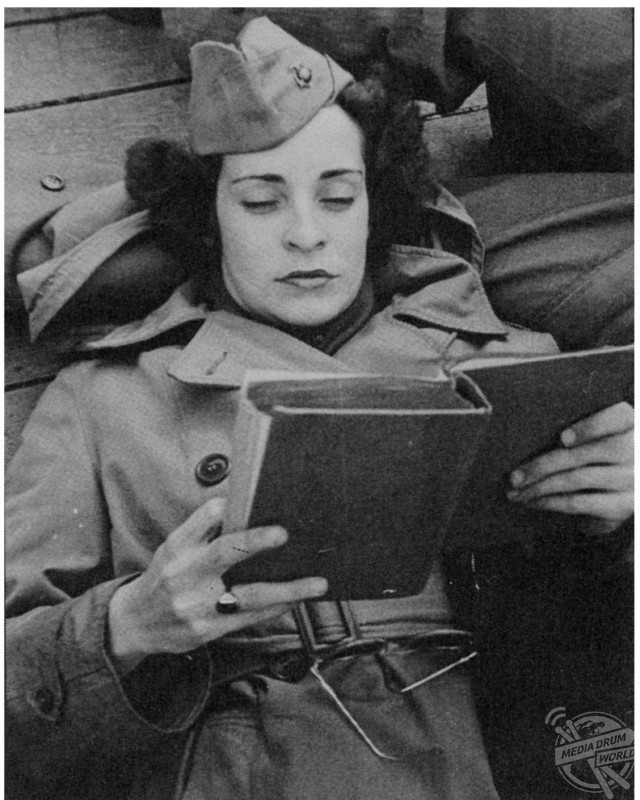
“From the outset, public media showed great interest in these female Marines, the Marine Corps being the last of the armed services to enlist women into their ranks.
“The media wanted all details of the new female recruits.
“’What shall we call them?’, the journalists asked.
“The reply from the Marine Corps was not necessarily to their liking when, in an article in Life magazine, Major General Holcomb stated: ‘They are Marines. They don’t have a nickname and they don’t need one. They get their basic training in a Marine atmosphere at a Marine Post. They inherit the traditions of Marines. They are Marines!’”
It is 101 years since the very first woman to join the Marine Corps Reserve enlisted on 13 August 1918, just a few months before the First World War ended.

During the Great War, hundreds of female Marines, referred to as ‘Marinettes’, relieved male Marines from clerical billets at Headquarters Marine Corps, enabling them to fight in France.
Other volunteers filled jobs at recruiting stations across the country.
They performed their duties admirably in a country which had not yet allowed them the right to vote (1920).
However, women in the Marine Corps were still considered a novelty and every single one was disbanded after the ‘war to end all wars’ was completed.
When the call to arms came for women in the Second World War, over 20,000 candidates put themselves forward, once again releasing urgently needed male Marines for combat duty.

The Women’s Reserve performed more than 200 military assignments.
In addition to clerical work, they also filled positions as parachute riggers, mechanics, radio operators, mapmakers, aviation mechanics and welders.
By June 1944, women reservists made up 85 percent of the enlisted personnel on duty at Headquarters Marine Corps and almost two-thirds of the personnel manning all major posts and stations in the United States and Hawaii.
“Although unpopular at first, by 1945 Women Marines had ‘released a man to fight’ in sufficient numbers to allow the Marine Corps to field the 6th Marine Division, made up primarily of veteran Marines, in time for the invasion of Okinawa on 1 April 1945,” added Moran.
The bloody but ultimately successful battle at Okinawa put US forces within touching distance of mainland Japan and proved to be one of the last great conflicts of the war.
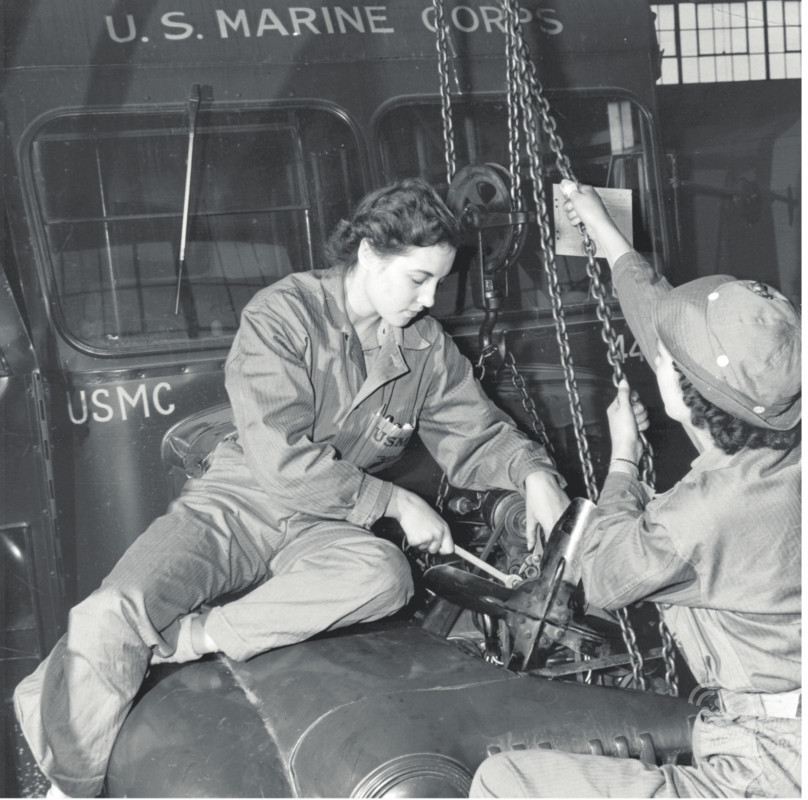
Just days later, devastating nuclear strikes on Nagasaki and Hiroshima brought the war to an end.
The significance women played in the success of the US troops’ success cannot be understated, as noted by former US Marine Nancy Wilt who writes the book’s foreword.
“An unknown Marine in World War II was quoted as describing the women of the United States Marine Corps Women’s Reserve (USMCWR) as ‘the smallest sorority in the biggest fraternity in the world’,” she explained.
“That small sorority of 1940s women who volunteered, earned the title Marine and then worked in over 225 occupational fields, filling positions that allowed the critically needed manpower, planes and equipment to reach the battlefields of the Pacific.
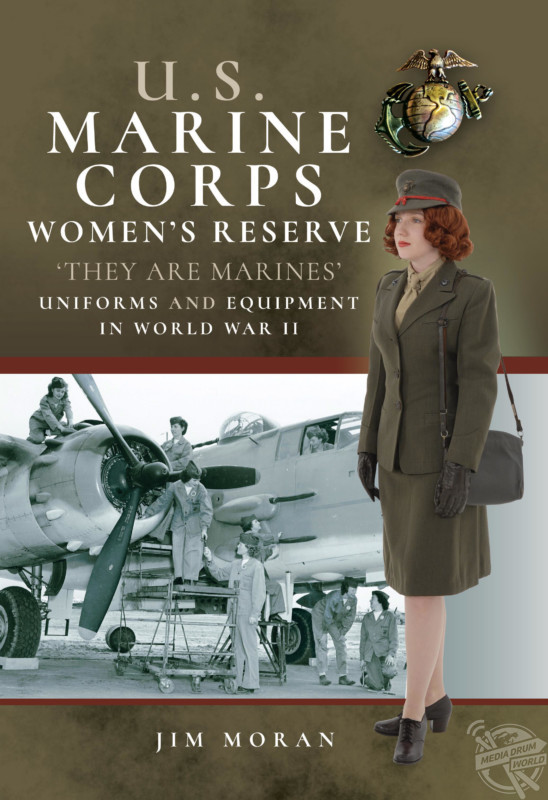
“The women had their illustrious Eagle, Globe and Anchor and wore the distinctive Forest Green of the US Marines – they were Marines.
“The high standards and respect of the American public toward the United States Marine Corps as being the ‘best of the best’ soon extended to include the women who now hold the title of United States Marine, thanks to these pioneering women.”
Jim Moran’s ‘U.S. Marine Corps: Women’s Reserve’, published by Pen and Sword Books, is available here.






